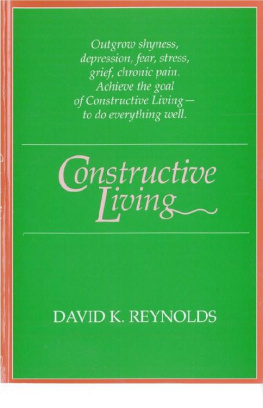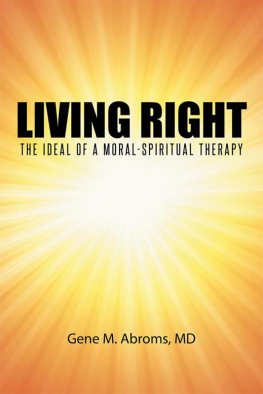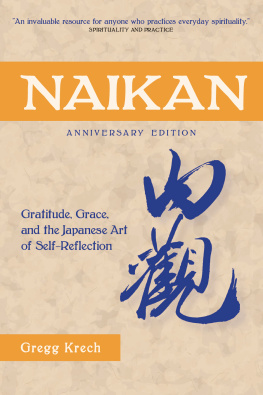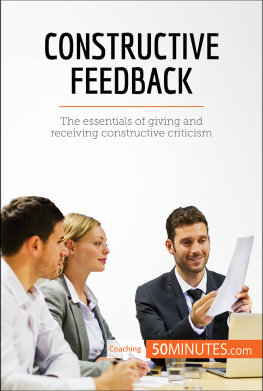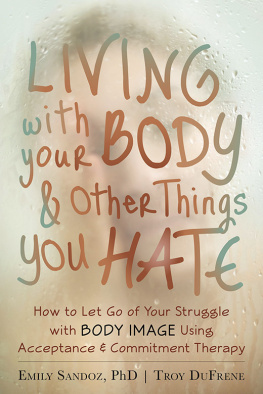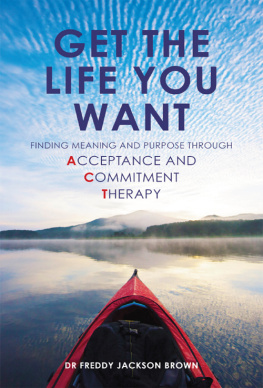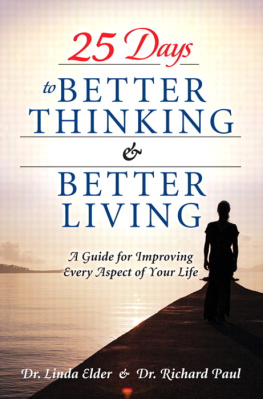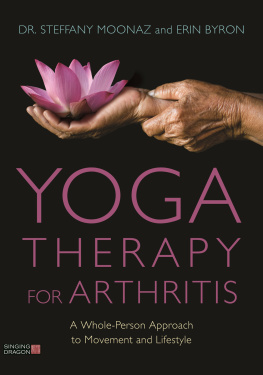Constructive
Living
Constructive
Living
David K. Reynolds

1984 University of Hawaii Press
All rights reserved
Printed in the United States of America
16 15 14 13 12 11 19 18 17 16 15 14
Library of Congress Cataloging in Publication Data
Reynolds, David K.
Constructive living.
(A Kolowalu book)
Bibliography: p.
1. Success. 2. Morita psychotherapy. I. Title.BF637.S8R44 1984 158.1 83-17868 ISBN-13: 978-0-8248-0871-6
University of Hawaii Press books are printed on acid-free
paper and meet the guidelines for permanence and
durability of the Council on Library Resources.
Designed by Roger Eggers
Printed by The Maple-Vail Book Manufacturing Group
www.uhpress.hawaii.edu
Contents
Preface
M ORITA T HERAPY , the basis of Constructive Living, isnt a fun therapy. It wont offer you new ways to play with your dreams and fantasies. It wont get you naked into a heated pool with a group of explorers of the psyche. It wont provide you with mystery or elaborate ritual or ready enlightenment.
But it will make solid sense to you, I think. It will slice through a lot of the excuses youve been feeding yourself (and others have been feeding you) for failing to live up to your potential. It will explain, and the explanations will check out with your experience. It will advise, and the advice will be down-to-earth, sound, practical. And it will leave totally up to you whether to act on the advice or not.
Some of you may find this lifeway too troublesome to bother with. Others may find a sort of salvation in it. All of you, I believe, will profit by considering it. Constructive Living presents a valuable alternative to emotion-centered living with all its ups and downs, all its uncontrollability. You will find there is a way to be sure of winning the game of everyday life.
It is perilous to write a book which argues that understanding is unimportant compared with doing. After all, most people read books in order to understand. It may go against your grain to be told that satisfying your hunger for knowledge about this way of life probably will have little impact on your life, but that trying some of the suggestions and exercises in this book (even without understanding fully why they work) may change your whole way of living. Nevertheless, I want you to check what you read here with your own experience.
The points I wish to make about Constructive Living are not especially valuable simply because I wrote them. They are valuable because they are the distilled wisdom of human beings in diverse cultures over hundreds of years. I am in no way remarkable. The most accurate thing that can be said about me is that I am changeable. So are you. We arent consistent in the way a character in a novel or a television serial is consistent. We are sometimes prejudiced, sometimes not; sometimes thoughtful, sometimes not; sometimes clever, sometimes not; sometimes suffering, sometimes not. From situation to situation, from minute to minute, and even within the same time period and place we have multiple identities that shift and flow in a complex dance of variation. There are no neurotics or geniuses or failures or fools. There are only neurotic moments, flashes of brilliance, failed opportunities, and stupid mistakes. But these moments, pleasant or unpleasant, can never fix us into rigid, immutable characters. We cannot help but change. This book is about choosing the direction of your changingness and acting upon your choice.
A number of people have contributed to this book. The Morita therapists and patients in Japan and the United States have taught me about Constructive Living. My student trainees have sharpened my understanding with their questions and critiques. Marguerite Reynolds and Eleanor Kwong typed the manuscript. My thanks to Elizabeth Yuin Hamilton for her assistance in compiling the list of Moritist maxims. Don Yoder contributed his sensitive copyediting of the manuscript, and Iris Wiley guided this work through the publication process with skill and encouragement. The TD Institute allowed the time for writing, reflection, and application of these principles. I am grateful to be riding on the efforts of these people.
Constructive
Living
Introduction
T HIS IS A BOOK about outgrowing your problems. Let us be clear at the outset that I cannot promise to make your problems go away. No one can. Life brings to all of us problems as well as successes, despair as well as joy. The Apostle Paul wrote that he had learned to adapt himself to every kind of circumstance, even being in jail. And the Buddha pointed out the inevitability of loss, sickness, aging, and death in human existence. Life cannot be an uninterrupted high. So if there are bound to be occasional lows it seems sensible to have a strategy for taking them in stride.
The same goes for shyness or chronic pain or tension or lethargy or any disability. If life has brought you such a problem (or even if you have created the problem yourself) you need to know how to take charge of it so that you can make the very best of what life allows. Anyone who promises more arouses my doubts about his or her ability to deliver.
The ideas behind this book have been around for hundreds of years. They are basically Buddhist, but dont let that fact mislead you. They are no more religious ideas than the concepts of psychoanalysis or the power of positive thinking or the principles of the American Constitution. They are simply the summed-up experiences of a lot of people who suffered themselves and treated other suffering people over the years. They make good common sense. Some eighty years ago a Japanese psychiatrist named Morita pulled together some of these ideas to turn his own life and the lives of many of his patients into demonstrations of the constructive possibilities that lie within us all. His methods are still practiced in Japan today. I have translated Moritas thought into terms understandable to Westerners and have added a notion of my own here and there, but the essence remains unchanged. The principles are as applicable to you and me as they were to the Japanese of Moritas day and the Japanese today. We are, after all, humans. And human suffering is human suffering wherever it is encountered.
Life Is Attention
R IGHT NOW lots of things are happening to you. Stimuli are flooding your senses. Your brain is even keeping track of what the big toe on your left foot is doing and how it is positioned, yet you probably werent paying attention to that datum until you read about it just now. (Unless, of course, you recently broke that toe, in which case youve probably noticed it a lot more lately.) An astonishing amount of input is available, yet normally were not overwhelmed by it. After all, a major function of our brain is to filter out masses of unnecessary data so that we can focus on essential information.
This observation leads us to an important point: Discomforting information is only discomforting when it gets through the filters of awareness and pops up in the middle of the spotlight of consciousness. In other words, we only hurt when we notice that we are hurting.
Surely you have heard of humans in battle or in accidents who performed tremendous feats while seriously injured, then collapsed later when the crisis was over and they noticed the damage and pain in their bodies. Perhaps you have read of the distraction caused by hypnosis or acupuncture needles that allows surgery to be carried out without anesthesia. A matter of attention. When youre not paying attention to your hurt youre not hurting. There may be tissue damage and bleeding, but you are not experiencing the pain; you arent feeling it.

